 By Mark Peters
By Mark Peters
Jack Kirby—who would have turned 100 this month, if he and we were luckier—is best known for his corporate creations, which are omnipresent in pop culture. As co-creator of the Marvel Universe, Kirby launched the heroes and villains currently taking over the world via the Marvel Cinematic Universe: Captain America, the Avengers, the Hulk, Black Panther, Ant-Man, and, among many others, Ego the Living Planet and Groot. He also co-created Fox’s gold mine the X-Men, and the New Gods, who will play a part in the Justice League movie.
But in the 1980s and 1990s, Kirby was a pioneer of creator-owned comics—via Captain Victory and the Galactic Rangers, Silver Star, and Topps’ Kirbyverse. As if Kirby hadn’t done enough for the business, these comics helped pave the way for today’s wild world of creator-owned comics at companies such as Image, Oni, IDW, and others. Though they’re not quite his best work, Kirby’s creator-owned comics are still crackling with quirky creativity.
The first issue of Captain Victory appeared in 1981, a decade after Kirby’s explosive departure from Marvel and arrival at DC, and a few years after Kirby had left comics altogether for animation. This was also the first issue for publisher Pacific Comics, who lured Kirby out of retirement by allowing him to finally own some of his brain children. The publisher only lasted three years but was a significant part of creator-owned comics in the 80s, along with companies such as Eclipse, First, and Marvel’s Epic line, which are predecessors of today’s creator-owned smorgasbord, where comics as weird and wonderful as Kaijumax, Sex Criminals, I Hate Fairyland, and Southern Bastards thrive.
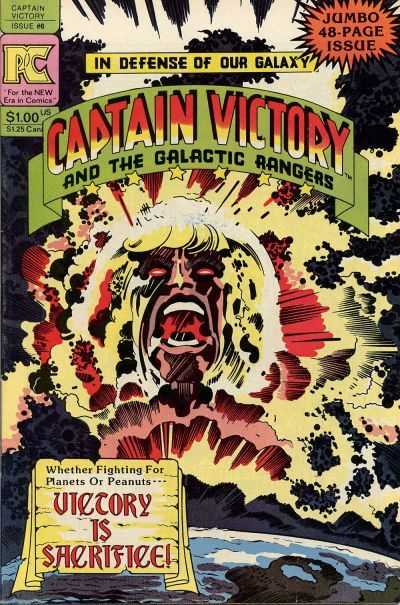
Silver Star was Kirby’s other Pacific Comic, which began as a screenplay written with assistant Steve Sherman. World War II veteran Kirby set this story during Vietnam. While in battle, grunt Morgan Miller “goes nuclear” for lack of a better term, filling with Kirby Krackle and developing the ability to throw a tank. Turn out Morgan—who is soon fitted with a silver containment suit—had a mother gifted with “pre-natal implants” meant to help her children survive an atomic war. He has become Silver Star, an example of “homo geneticus,” the next step in human evolution. Much like mutants, not all members of the new species are the two-legged equivalent of fluffy puppies, especially the evil Darius Drumm.
Silver Star is classic Kirby in several ways: exuberant creativity, propulsive action, and some weird dialogue. Kirby was a brilliant plotter and perhaps the best idea man in the history of comics, though rarely praised for his scripting—but maybe he should be. Much like Neal Adams, whose Batman: Odyssey and Superman: The Coming of the Supermen feature gorgeous art and batshit dialogue, Kirby’s writing has a certain bent charm. In Silver Star, there are some classic Kirby lines such as “Looks like a superhero, sir…but he acts like a weirdo!” and “Beware of blaspheming, bumpkin!” But the best line goes to the amazingly named Colonel Walter Hammer, M.D., who brushes off some whining about humanity’s possible extinction: “Don’t rattle your gonads in my ears! Mama Nature doesn’t give a damn!” Truer (and weirder) words have never been spoken.
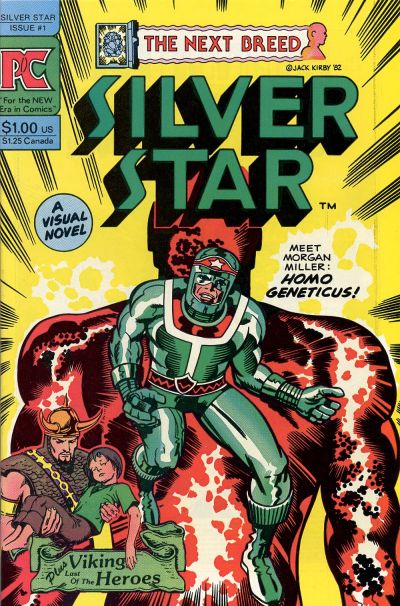
Kirby struck another blow for the creator-owned side of comics when he teamed with Steve Gerber in 1982 to create Destroyer Duck for Eclipse. Gerber, who famously created Howard the Duck, was in the middle of a legal battle with Marvel, which was satirized in the comic as the merciless Godcorp. The comic was launched to fund Gerber’s lawsuit against Marvel, and Kirby was the perfect partner, creatively and morally.
Then there’s the Kirbyverse, published by Topps Comics in 1993 and 1994. The failed line didn’t lack ambition, featuring new Kirby pages (and trading cards) while enlisting creators such as Kurt Busiek, Steve Ditko, Roy Thomas, and Walter Simonson to flesh out Kirby sketches into full-blown characters and situations, while reviving Captain Victory and Silver Star. Busiek took another, more successful shot at honoring Kirby’s creator-owned ideas with Kirby: Genesis for Dynamite in 2011. With art by Jack Herbert and Alex Ross, this series is both loving homage and bonkers exploration of the many ideas and characters owned by the Kirby heirs.
Michel Fiffe—the creative dynamo behind Copra, who has worked on Kirby concepts for a recent Captain Victory and the Galactic Rangers comic—said by email of Kirby’s struggles to get proper credit and compensation: “Kirby’s a cautionary tale, for sure. If it can happen to Kirby, no one’s safe. Those late period Kirby comics are a reminder of how relentless he was despite it all.”
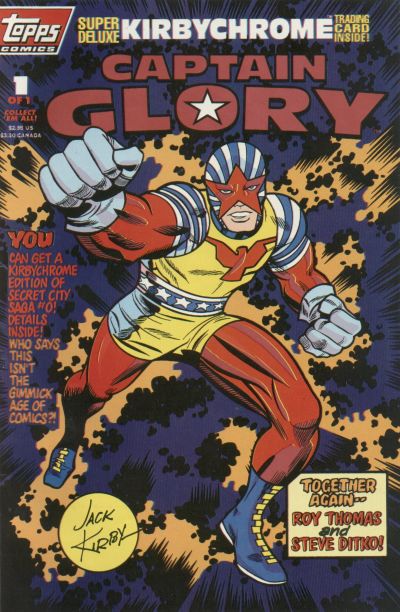
In all his work, creator-owner or corporate-controlled, romance or war-torn, superhero or mythological, Kirby always paved “newer, wider, constructive avenues” that we’re still riding today. Thanks, King.
Mark Peters is the author of Bullshit: A Lexicon. Follow him on Twitter.


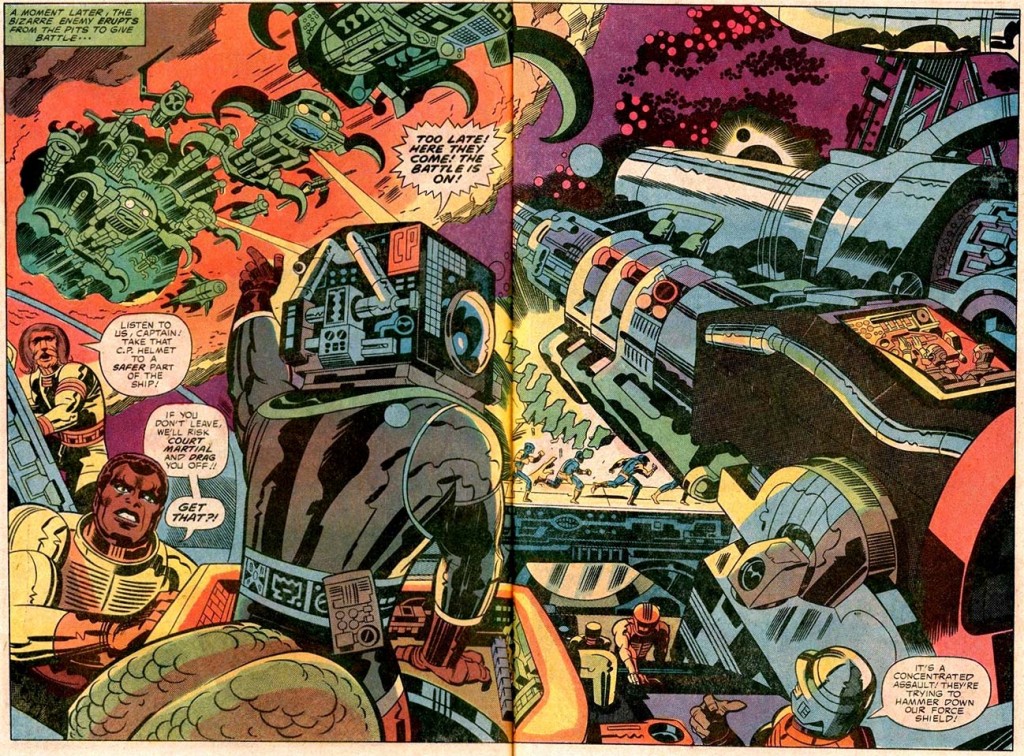
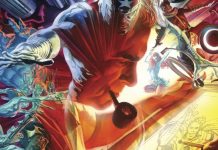
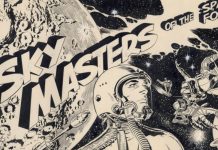
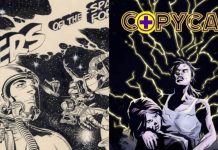



This article was awesome! I love the history of creator owned comics! Thank you!
I wish the Topps Kirbyverse comics were available somehow. They seem like old time comics fun. I love the crazy ideas and of course Kirby art. .
It’s worth keeping in mind that creator-owned comics didn’t begin in the 1980s, even for Jack Kirby. Simon and Kirby owned BOYS’ RANCH, FIGHTING AMERICAN and others, just as Joe Kubert owned TOR, Will Eisner owned THE SPIRIT and Walt Kelly owned POGO.
The indy comics of the 1970s (STAR REACH, ELFQUEST, etc), themselves birthed out of the undergrounds, led to the direct-market indy boom and a place where creator-owned books (some of them, at least) could be successful.
But whenever creator-ownership was feasible (i.e., you could do it and have a crack at surviving financially), there were creators in there trying, and Kirby was usually one of them. The desire to be in charge of one’s own destiny was strong, all the way back.
None of this is meant to knock this article or Kirby’s 1980s books, which I love. Just to offer some more data, since all too often it seems like Kirby’s career is seen as starting with the Marvel Universe, when that was actually his third career peak. There’s a lot of great stuff prior to his return to Marvel…
…and man, we need a new reprint of BOYS’ RANCH.
And a set of S&K romance archives…
Hate to nitpick, but Kirby didn’t “co-create” the New Gods as the article implies. Kirby fully created them himself.
Love it. Here’s some insights I gleaned from Bill Schanes, Pacific’s Publisher: a couple of summers ago: http://www.comicmix.com/2015/08/31/ed-catto-the-not-quite-secret-origin-of-pacific-comics/
Comments are closed.